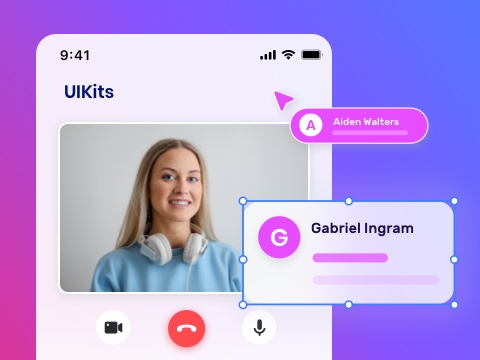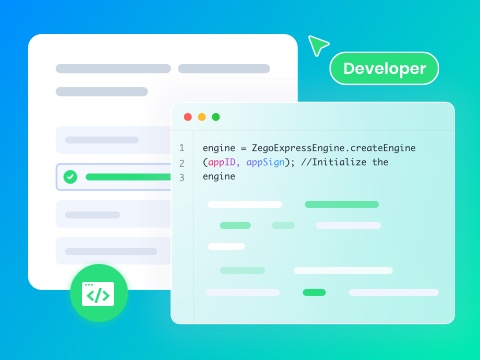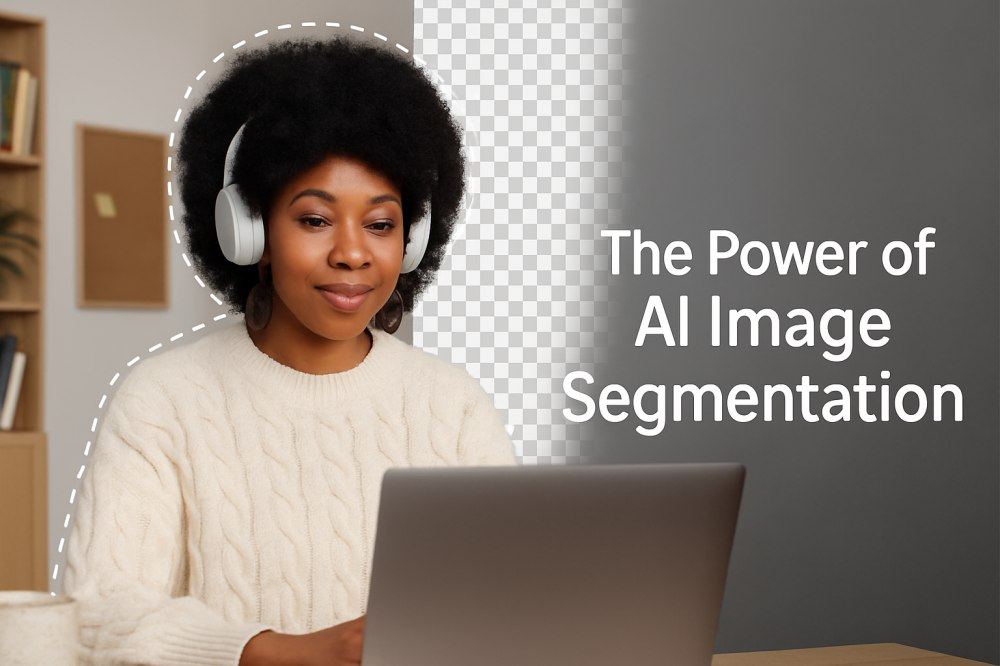AI-powered image segmentation is rapidly transforming how we process, analyze, and interact with visual data. From enhancing medical imaging to powering augmented reality (AR), this technology is now a key driver behind many real-time and automated systems. In this article, we’ll explore what AI image segmentation is, how it works, the main types of segmentation, and why it’s becoming essential in modern applications.
What is AI Image Segmentation?
Image segmentation refers to the process of dividing an image into meaningful regions, where each region corresponds to an object or part of an object. Unlike image classification (which labels the entire image) or object detection (which identifies object positions), segmentation assigns a label to every pixel in an image—making it more detailed and useful for precision tasks.
AI-based image segmentation uses machine learning and deep learning models to automate and improve this process. These models can detect complex patterns, adapt to various image conditions, and scale efficiently across large datasets—offering significant accuracy and performance gains over traditional rule-based methods.
How AI Image Segmentation Works
The AI segmentation workflow typically involves several key stages:
1. Data Collection and Annotation
High-quality data is crucial. Developers can use open-source datasets or create their own, manually labeling each pixel to form accurate segmentation masks. This step can be labor-intensive, but it ensures precision—especially in domain-specific applications like medical or satellite imaging.
2. Model Selection
Convolutional Neural Networks (CNNs) are the foundation of most segmentation models. Popular architectures include:
- U-Net – widely used in medical image segmentation.
- FCN (Fully Convolutional Networks) – suitable for semantic segmentation.
- Mask R-CNN – used for instance-level segmentation in real-world scenes.
These models are designed to learn and predict pixel-wise labels based on visual features like edges, shapes, and textures.
3. Training and Evaluation
Models are trained using labeled datasets, where they learn to map input images to accurate segmentation masks. Loss functions such as cross-entropy or IoU (Intersection over Union) help fine-tune model parameters. Metrics like pixel accuracy, mIoU (mean IoU), and F1-score are commonly used to evaluate performance.
4. Fine-Tuning and Post-Processing
Pretrained models can be fine-tuned using smaller, task-specific datasets. This transfer learning approach accelerates training while reducing data requirements. Additional post-processing—such as smoothing edges or removing noise—further improves visual output quality.
Types of AI Image Segmentation
AI image segmentation falls into three main categories, each with its own method for labeling image content. The best choice depends on your task, the complexity of the scene, and the nature of your dataset. Understanding these distinctions helps you select the right technique for your computer vision application.
1. Semantic Segmentation
Semantic segmentation classifies every pixel in an image into a specific category—without differentiating between separate instances of the same object. It produces a broad visual map that identifies general object types within a scene.
For example, in a street view, the system labels all pixels representing “cars” as one class, regardless of how many cars appear. Likewise, buildings, roads, and pedestrians each receive their own category label.
Developers often use semantic segmentation when they need to understand what is present in an image, not how many instances exist. It’s common in scene parsing, content filtering, and image tagging.
2. Instance Segmentation
Instance segmentation takes things further by distinguishing between individual objects within the same class. It not only identifies what an object is but also tracks each occurrence as a separate entity.
In the same street scenario, the algorithm assigns a unique identifier to each car, even though they all belong to the “car” class. This added layer of detail plays a critical role in safety-sensitive applications like autonomous driving, where the system must treat each pedestrian or vehicle as an independent unit.
You’ll also find instance segmentation widely used in areas like medical diagnostics, retail inventory systems, and crowd analysis.
3. Panoptic Segmentation
Panoptic segmentation merges the capabilities of semantic and instance segmentation. It assigns a semantic class to every pixel and a unique ID to each object instance—allowing for both broad scene interpretation and fine-grained object tracking in a single process.
This unified approach enables systems to fully understand complex environments. It works especially well in robotics, AR/VR applications, and intelligent surveillance, where software must respond to both background elements and moving subjects in real time.
Thanks to its comprehensive nature, panoptic segmentation supports advanced, context-aware decision-making across a wide range of use cases.
Why AI Image Segmentation Is Important
As visual data continues to grow exponentially across industries, traditional image processing methods are no longer sufficient to meet the demand for speed, accuracy, and scale. AI-driven image segmentation offers a smarter, more scalable solution—enabling machines to understand and interpret images with human-level precision.
Here are some of the key reasons why this technology is becoming essential in today’s digital workflows:
Boosts Accuracy and Efficiency
AI segmentation automates complex tasks that were traditionally slow and error-prone, making it possible to process high volumes of images with greater reliability.
Enables Personalization
By understanding image content at a granular level, systems can deliver more tailored experiences—for example, product recommendations in e-commerce or content tagging in social media.
Reduces Costs in Visual Editing
Tasks like background removal, object cropping, and visual enhancement can now be handled automatically, saving time and reducing dependence on manual tools.
Enhances Decision-Making
In fields like healthcare, AI segmentation helps detect abnormalities in scans with high precision. In autonomous vehicles, it helps identify objects like pedestrians, signs, and road boundaries.
Scales Across Large Datasets
Whether it’s managing medical image archives, surveillance footage, or satellite imagery, AI segmentation scales well and adapts to massive datasets.
Use Cases for AI Image Segmentation
AI image segmentation is now being used across a wide range of industries, supporting both real-time applications and large-scale data processing. Here are some of the most impactful use cases:
- Medical Imaging
AI segmentation helps identify tumors, organs, and other structures in MRI, CT, and ultrasound scans. It improves diagnostic accuracy and speeds up analysis in radiology and pathology workflows. - Autonomous Driving
Self-driving systems rely on segmentation to distinguish between vehicles, pedestrians, road signs, and lane markings. This pixel-level understanding is critical for real-time decision-making and safety. - Augmented Reality (AR) and Virtual Try-On
Segmentation powers AR features such as face tracking, background removal, and object overlay. It’s used in social apps, gaming, and online shopping experiences like virtual makeup or clothing try-ons. - Live Streaming and Video Communication
Real-time segmentation allows apps to offer virtual backgrounds, beautification filters, and AR effects. It enhances visual quality and user engagement in video calls, webinars, and livestreams. - Retail and Inventory Tracking
In-store cameras and shelf-scanning systems use segmentation to detect and count individual products, helping automate inventory management and stock replenishment. - Satellite and Aerial Image Analysis
AI segmentation assists in land cover classification, deforestation tracking, and urban planning by breaking down complex satellite images into meaningful regions.
These use cases show how AI segmentation delivers value in both consumer-facing and enterprise-level solutions—combining speed, precision, and scalability across industries.
Real-Time Applications: How ZEGOCLOUD Uses AI Segmentation
ZEGOCLOUD’s AI Effects supports real-time face and body recognition, including half-body, full-body, and multi-person scenes. This makes it ideal for immersive live streaming, video conferencing, and interactive virtual applications.
The segmentation engine supports real-time face and body recognition, including half-body, full-body, and multi-person scenes—enabling precise foreground-background separation across a wide range of use cases.

Here are some common use cases powered by ZEGOCLOUD’s technology:
- Virtual Background and Blur Effects
The SDK can detect and separate the user from their environment in real time. This allows apps to blur or replace backgrounds—improving privacy and professionalism in live meetings or streaming. - AI-Powered Beautification
Facial regions are segmented accurately so that effects like skin smoothing or tone adjustments can be applied with precision and minimal processing. - Foreground Isolation for AR Overlay
AR filters, stickers, or effects can respond smoothly to user movement thanks to real-time foreground tracking. This is ideal for social, educational, or e-commerce apps that need immersive experiences. - Optimized for Live Scenarios
The segmentation engine is built for low-latency environments. It maintains stable performance even on unstable networks—perfect for classrooms, webinars, or live demos.
With these built-in features, ZEGOCLOUD’s SDK helps teams reduce development time, cut infrastructure costs, and deliver more engaging real-time experiences across platforms.
Want to build segmentation features into your app? Explore ZEGOCLOUD’s AI Effects SDK →
Conclusion
AI image segmentation is reshaping industries that rely on visual data. Its ability to break down images at the pixel level—combined with scalable, real-time processing—makes it one of the most valuable tools in computer vision today. Whether you’re building video-based experiences, analyzing medical imagery, or automating content moderation, segmentation powered by AI offers the precision, flexibility, and speed you need to stay ahead.
Let’s Build APP Together
Start building with real-time video, voice & chat SDK for apps today!










